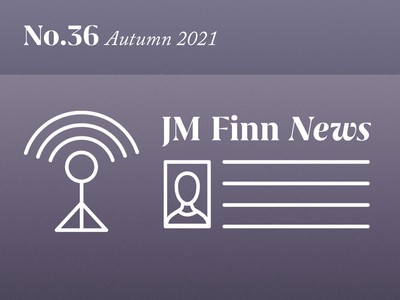Our asset allocation committee is one example of this, via their monthly output showcasing their views on a global basis; this is then complemented by a sectoral view from the stock selection committee. The combination of these top down and bottom up opinions is an important resource for our investment managers to validate their own investment theses or to generate new investment ideas.
These committees, which consist of members of our research team and a number of investment managers, aim to provide a view that seems most suitable in the current climate. The output of the monthly meetings remains a suggested stance and it is important to note, that the views expressed are those of the committees and may not necessarily be those of your individual investment manager.
Here we present a snapshot of the current views.
SECTOR VIEWS
|
Materials |
Short term drivers include sustained high commodity prices and the growth-to-value rotation. Long term, the sector is in flux from more traditional commodities to new green economy commodities. |
|
Consumer |
We like the sector for its high quality businesses and the resilience over the pandemic period. The sector is expected to deliver only modest growth and is viewed as a bond proxy, it is therefore vulnerable to a rising interest rate outlook. |
|
Consumer |
As lockdown conditions ease, support measures have helped mitigate weakness in consumer balance sheets. Savings have scope to reduce and banks are now expanding credit. Normalised spending patterns offer tailwinds for consumer names. |
|
Financials |
This includes a broad range of stocks which are generally geared to investment markets. Valuations not at a level to turn more positive. |
|
Financials |
Banks are benefiting from the continued steepening of yield curves. US banks are best placed, followed by UK and then European banks. |
|
Financials |
Whilst acknowledging the difficulties on the high street and concerns over liquidity in open ended vehicles we do see value in some areas. We would rather see more visibility on the impact from easing the lockdowns. |
|
Financials |
The main business problem is a lack of growth for any company that is without exposure to Asia. |
|
Financials |
Global real estate may offer better value but again caution on bond proxy status and impacts from the pandemic. |
|
Health Care |
Growth and defensive attributes and demographic tailwind. Distinguish between pharma/healthcare/biotech sub sectors. A key theme reinforced by the current crisis. |
|
Industrials |
We see increasing evidence that economic activity is improving and see this broadening out over the coming months. We recently changed to a positive stance on the sector. |
|
Energy |
Short term catalysts such as pandemic recovery and sensible OPEC target production growth drove oil price rally. The sector remains under pressure on environmental concerns. |
|
Information Technology |
We like the structural tailwind that provides support for the sector. However, heightened valuations are susceptible to rising bond yields. We favour cyclically exposed names likely to benefit as the economy unlocks. |
|
Communication Services |
A number of sub-sectors performed well through the pandemic, such as online gaming and online media. Changed behaviours will persist and see further growth. Digital advertising names have cyclical upside potential. We continue to avoid more traditional telcos. |
|
Utilities |
Sector has some safe haven support, however is not immune from the slowdown as business customers suffer. |
UK EQUITIES
|
UK |
Positives: Cheap on a relative PE basis. Brexit risk, an unlucky resurgence of Delta COVID 19 and unlikely Scottish devolution risk are priced in. Heavy on cyclicals which will do well if global growth continues and if China relaxes. Expected mild inflation will help asset prices. Fiscal responsibility driving “Goldilocks” growth. Rate rise not imminent. Negatives: FTSE100 is heavy on ESG-poor oils and miners and lingering inflation risk. |
INTERNATIONAL EQUITIES
|
North America |
Positives: Fears of over-heating are waning with on-going support coming from large but post-peak fiscal spending programs aligned with a perception that any deceleration of economic and employment growth will deter monetary tightening. Slow global recovery could draw out tech rally. Ending wage support schemes should increase the supply of workers and help control wage inflation. Past peak stimulus. Negatives: Re-start of rotation out of growth/ tech into value. |
|
|
Europe |
Positives: The €750 billion Recovery Fund is now being invested. Christine Lagarde is dovish helping asset prices. Negatives: Too much ESG focus could increase cost of capital. 3% inflation might press ECB hawks to taper. The doom loop for local banks is a black swan to watch whilst high unemployment is still a drag. |
|
|
Japan |
Japanese equities have risen on the back of Suga’s resignation and likely political change. Positives: Japanese valuations appear attractive and positioning looks light. The Yen has the potential for reverting to safe harbour mode if COVID-19 variants extend the pandemic. Japan is overweight industrials and consumer discretionary for the value trade. Negatives: We are cautious of much needed corporate reforms delivering on their promises although more share buy backs will help. The vaccine roll out has been unimpressive. Watch for quiet Bank of Japan tapering. |
|
|
Asia Pacific |
Positives: China is not imploding under a debt burden as many once feared and we are impressed with the China’s ability to exercise monetary restraint without driving an overly negative reaction. We think that regulatory crackdowns are coming to an end. Korea and Taiwan should benefit from the surplus of semiconductor chip demand. Negatives: Rebound in USD through to 2022 might hurt emerging markets in this region. |
|
|
Emerging Markets |
We have a preference for China, Korea, Russia, and Mexico. The near term risk is focused on Latin America if the USD strengthens and if China’s tightening leads to more stalling commodities. Positives: USD weakness seems likely in the long term (post rates adjustment) and a gradual improvement in commodity prices (linked to a Chinese infrastructure stimulus) could help markets sensitive to commodity exports. Brazil, India and Russia have managed their third COVID 19 waves lower. Negatives: COVID-19 variants into relatively unvaccinated populations are always a worry and raises the risk premium. Political risk remains and supply chain issues abound. |
BONDS
|
Conventional |
The prospect of inflation, driven by the temporary impact of base effects and demand being fed into a sub-optimal supply chain continues to be a concern. |
|
|
Corporate |
Given our overweight equity position, we would prefer to be underweight corporate bonds. There is a possibility that corporate spreads could reduce further but we continue to think the upside from spread contraction has probably reached its limit. |
|
|
Index Linked |
Pricey inflation hedge. Positives: Hedge against inflation increasing from loose monetary and fiscal policy and a compromised supply chain. Negatives: Expensive negative yield curve in the UK. |
CASH
|
Cash |
Cash has a poor yield but keep some on the side-lines for a possible pullback. |
PROPERTY
|
Property |
Real estate lies somewhere between equity and bonds and we still prefer equities. Choose exposure with care and avoid poor quality retail. |
ALTERNATIVES
|
Alternatives |
We prefer to make more precise calls in equity, cash and fixed income. We like infrastructure and gold as diversifiers within the sector. |




